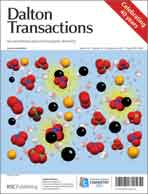Biomimetic mineralisation of polymeric scaffolds using a combined soaking approach: adaptation with various mineral salts
Abstract
Biomimetic strategies which utilise hydrogels have been targeted due to favourable hydrogel characteristics such as the presentation of a large surface area for crystal nucleation within a structured yet responsive scaffold.


 Please wait while we load your content...
Please wait while we load your content...